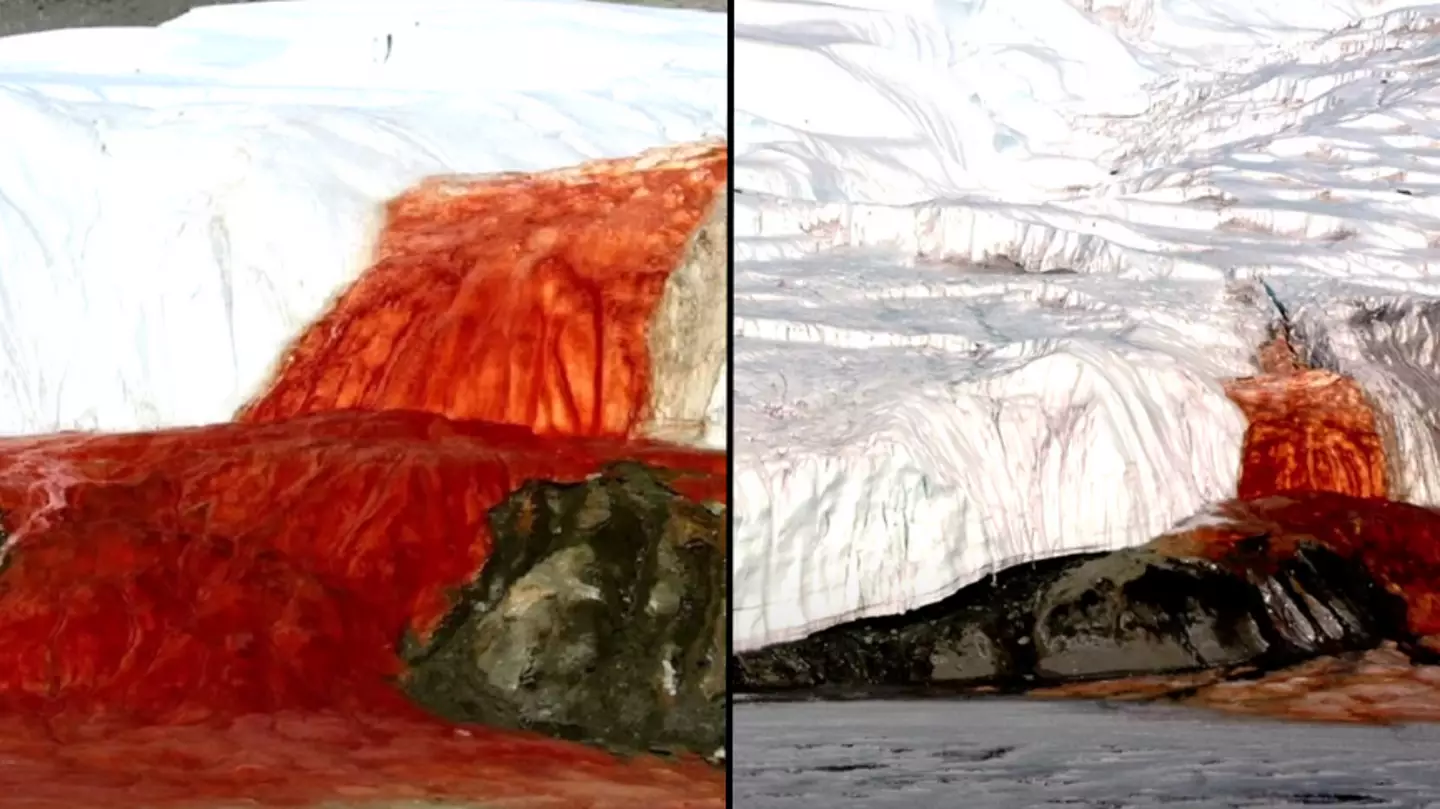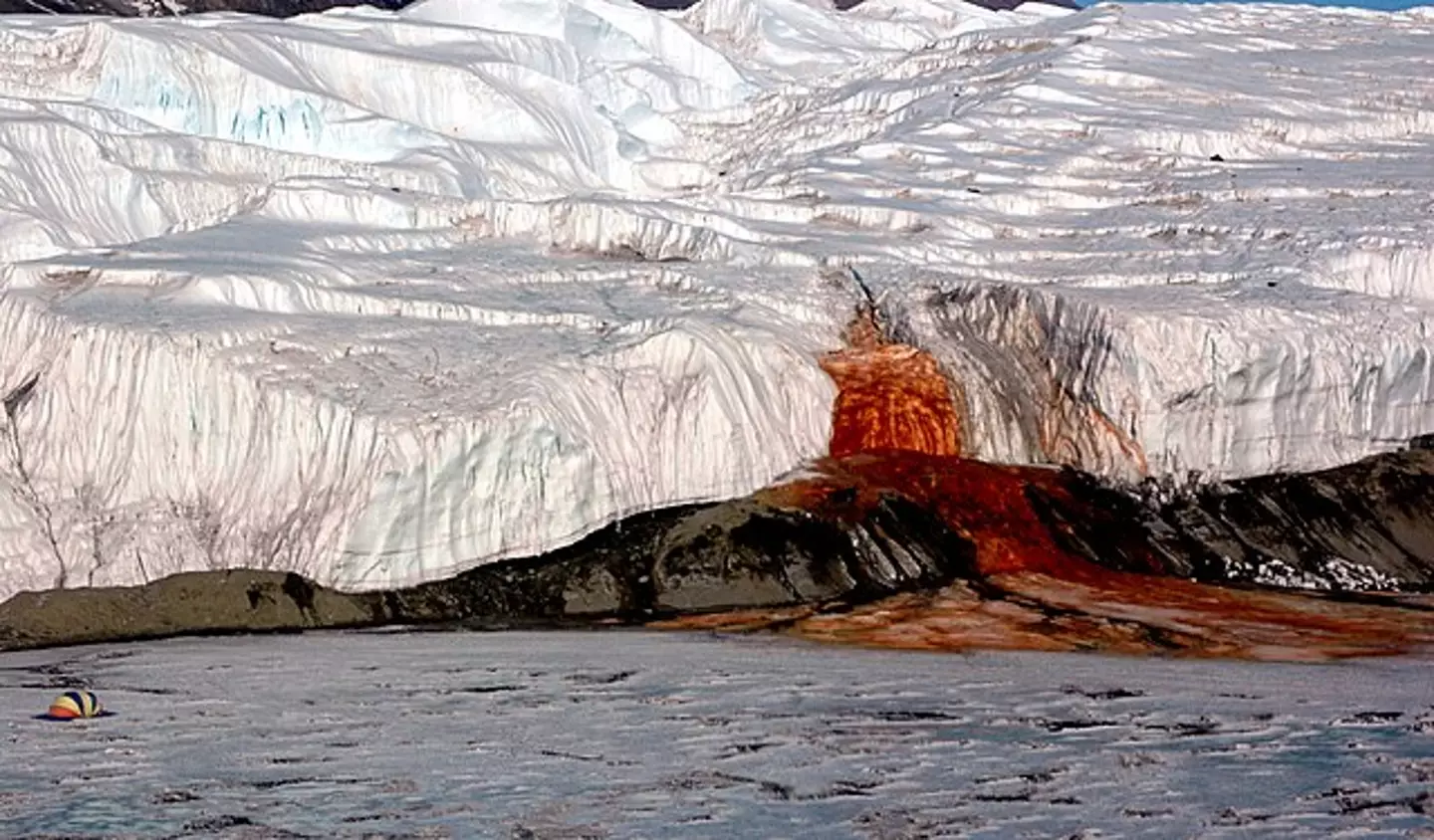
The mystery of the 'bleeding' waterfalls in Antarctica were solved after decades of confusion and speculation.
Take a look at any picture or video of Blood Falls and you'll soon see where it gets its name.
Situated in the McMurdo Dry Valleys of Antarctica, the flow of water looks like some sort of crime scene as bright red and orange hues overpower the otherwise grey and white backdrop.
Ever since it was discovered in 1911 by Australian geologist Thomas Griffith Taylor, people have tried to figure out why the phenomenon looks the way it does.
Advert
For decades, numerous hypotheses were put forward, ranging from the regular, such as red algae, to the ridiculous, i.e. alien portals.
As said by Arlo Pérez, co-host of PBS Terra's Antarctic Extremes series: "It looks more like Mars than Earth."
Meanwhile, fellow co-host Caitlin Saks jokes: "Honestly? I think of the glacier having its period."
Although it might look like the time of the month has arrived for this corner of the world, there's a far more reasonable explanation.

Advert
As well as its red hues, scientists wanted to figure out why Blood Falls consists of flowing water, considering it does so in a place where the mean temperature is nearly -19 degrees Celcius and there's minimal melting at the surface.
Thanks to a study by researchers at the University of Alaska Fairbanks, including National Geographic explorer Erin C Pettit, we now know the answers to these questions.
Using radio-echo sounding, which allowed the team to map out the features of the area, they discovered the water is extremely salty - we're talking more than twice as much salt content as sea water.
They also found that the brine is high in iron, and since it is initially cut off from the atmosphere, when it comes into contact with oxygen, it oxidises - or rusts. Hence the unusual colouring.
As for why the water flows rather than freezes, it's because saltwater has a higher freezing point.
Advert
Pettit explains: "While it sounds counterintuitive, water releases heat as it freezes, and that heat warms the surrounding colder ice.

"This source of heat within Taylor Glacier combines with the lower freezing temperature of salty water (brine) to make brine movement in the extremely cold ice possible.
"Taylor Glacier is now the coldest known glacier to have persistently flowing water."
Now, you might be wondering why the water here is so rich in salt and iron, and to answer this we have to go back around five million years.
Advert
Back then, it's believed that the Dry Valleys were actually beneath the ocean, and when the climate changed and the sea level dropped, the salty water was left isolated as a lake.
The team's hypothesis goes on to suggest that approximately 1.5 million years ago, a glacier advanced over the lake, leading to the salty brine that feeds Blood Falls today.
Topics: Science, World News